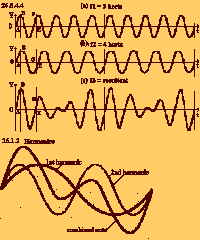More notes on the active-passive noise cancellation debate


Active canceling targets the low-frequency noises, such as regular sounds of engine noise and fans on an airplane. However, it doesn't really stop other more-random noises, such as people talking. As a fan of passive noise reduction — which function as earplugs when turned off (and even when turned on) — I've considered any noise as a distraction. But Apple Core reader ANRfan sees this "leakage" as an advantage.
I want the plane engines and other white noise to go away, which if I'm listening to music means that the low notes and midrange don't have to compete for that part of the frequency spectrum, but I still want to be able to talk to my family.
I also use ANR headphones at my desk to selectively filter the fan noise from the computers, HVAC system, printers, etc. Again, I'm able to hear what I need to hear, but the white noise goes away.
That could be useful, especially in the office environment. If the technology were built into a telephone headset, even better.
In addition, with this comment, shows his/her quality as a husband/wife and father/mother. ANRfan is concerned with listening to his or her family members and employs a technology that facilitates this social functioning.
Since the passive noise reduction functions as earplugs, it prevents this easy, familial interaction. My wife finds my earphones very, very annoying, since I'm not paying adequate attention to her and she often must repeat herself. What? Sorry!
Yet, I usually keep one earphone deeper in the ear than the other. This allows more ambient "noise" into one ear and thus helps to keep peace in the family.
One reader responded in an email that the active systems made him dizzy!
I have never liked the active systems. Maybe the upscale models are better but the lower priced active systems I tried while decreasing the noise made me dizzy. I suspect they set up some odd vibrations on my tympanic membranes.
Yikes. I've never encountered this problem with the active headphones. And it's an evolving technology. It can't be happening to many users.
Still, one problem I've found with some passive earphones is that they can be pulled deep into my ear, beyond the reach of my fingers. This has happened with the models that have very short bodies. Of course, you can yank them out by pulling on their cord, but that's not good for them. Some models have longer bodies, such as the Etymotic Research ER•4 MicroPro earphones, which lets users place the eartip deeply into the ear, but not so deep that the body can't be grabbed.
Other readers said that sometimes the eartip slips off and remains in the ear. This has happened to me a couple of times, once on a long flight. I now carry a set of dull tweezers in my carry-on bag just in case this happens.
However, users should clean the silicone or rubber eartips every now and then (more frequently than never) and check the eartips to see if they are pulling away from the barrel. Following these simple steps will let you avoid this problem.